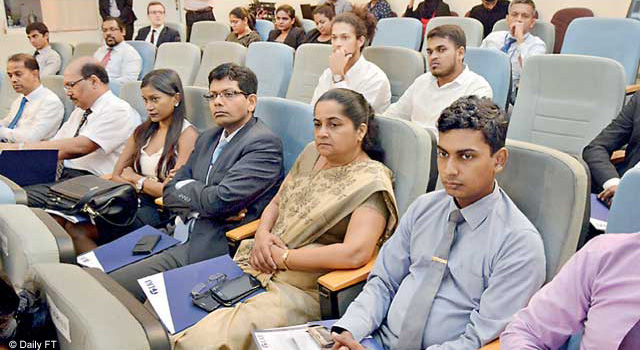On April 1, the virtual meeting of the foreign ministers of member countries of the Bay of Bengal Initiative for Multi-Sectoral Technical and Economic Cooperation (BIMSTEC) was held in Sri Lanka, in which agenda for the forthcoming Fifth Summit, likely to be scheduled for Colombo by mid-August of this year, was discussed in detail. At the end of the meeting it was announced that the agenda of the meeting would include the approval of the BIMSTEC Charter, its master plan for transport connectivity and convention on mutual legal assistance, finalization of the coastal shipping agreement and the motor vehicle agreement.
In an earlier development, with the fading out of the expectations from the South Asian Association for Regional Co-operation (SAARC) in recent past and particularly from the year 2016 when, due to the terror attacks in Pulwama, all members of the organisation under unavoidable circumstances declined to participate in the summit to be held in Islamabad, Pakistan, which took place for the first time in the history of this body, New Delhi, decided to move slowly with SAARC and, in place, showed interests in strengthening BIMSTEC, a regional organisation and an economic bloc of the countries surrounding the Bay of Bengal with four initial members, Bangladesh, India, Sri Lanka and Thailand.
It had come into being on 6 June 1997 through the Bangkok Declaration. Its primary objectives, set at the time of its inception, focused on accelerating economic growth and social progress among members in multiple sectors that included trade, technology, energy, transport, tourism, agriculture, public health, poverty alleviation counter-terrorism, environment, people to people contact, and climate change. After formation its nomenclature has been changing due to expansion in its membership with Myanmar in 1997 and with the entrance of Nepal and Bhutan at the 6th Ministerial Meeting in 2004, its membership rose to 7 and it was renamed finally as the Bay of Bengal Initiative for Multi-Sectoral Technical and Economic Cooperation (BIMSTEC).
It is a great opportunity for India to show its interest and endeavour by overlooking SAARC due to irritants with Pakistan. Wider connectivity will benefit directly in India’s four coastal states adjacent to the Bay of Bengal-Andhra Pradesh, Orissa, Tamil Nadu and West Bengal, where almost one-quarter of India’s total population lives, apart from opening a new avenue for its landlocked northeastern states
Of the total seven members five, India, Bangladesh, Bhutan, Nepal, and Sri Lanka, belong to the South Asia region while two, Myanmar and Thailand, are in Southeast Asia, but all are situated on the shores of the Bay of Bengal and hence are dependent thereon. The Bay of Bengal itself is the largest bay of the world, having pivotal importance for the countries in the domain of demography, economy and security. One-fourth of the world’s population live in these seven countries around it, and half a billion people directly live on its coastal rim and despite adverse global financial environment, the combined GDP is close to $2.7 trillion and they were able to sustain annual rates of economic growth of between 3.4 percent to 7.5 percent between 2012 to 2016. In addition, the Bay of Bengal is also rich in untapped natural resources, seabed minerals and connectivity. It has the world’s largest reserves of gas, large fishing stocks and is able to link Indian and Pacific Oceans and as a result, one-fourth of the world’s traded goods cross the Bay of Bengal every year. While for China it is crucial to preserving its route to the Indian Ocean, for India, it is an avenue for projecting its new naval capabilities. However, despite these geographical and natural facts the seven countries that encircle the Bay of Bengal are varied in politics, economy, infrastructure and above all in internal connectivity, and therefore, integration among the nations is more urgent today than anything else to make the BIMSTEC, a great success.
In today’s context, there is a need to revive the spirit and enthusiasm existed at the time of its foundation almost 24 years ago when the four original members expressed a desire for common action to promote sub-regional cooperation in areas of trade, investment technological exchange and other interrelated areas in a spirit of equality and partnership. With this agenda and keeping in view the long-standing divide and country-wise imbalances the BIMSTEC emerged as a major advocate for regional cooperation between South and Southeast Asia and in the context the member countries began to search for a common heritage around the Bay of Bengal.
Although, for a long time the organisation was in stagnation since its inception, no regular or periodic summit had been held so, until the first on 31 July 2004 at Bangkok (Thailand), the second on 13 November 2008 at New Delhi (India), the third on 4t March 2014 at Naypyidaw (Myanmar), the fourth 30-31August 2018 at Kathmandu (Nepal) and the fifth scheduled to be held in 2022 at Colombo (Sri Lanka).
Despite previous odd events and irregularities, it is a good and encouraging sign for the organisation that the new leadership of member countries, particularly of India, is taking interest in its revival and it has enjoyed a great deal of visibility since 2016 and 2017. After 2014, its ministerial and senior officials’ meetings were held in 2017 and in the same year a new secretary general was appointed in August and the summit, several times postponed, took place in 2018. Earlier to all, the BIMSTEC got its permanent secretariat opened at Dhaka, Bangladesh, in 2014 and India contributes 32% of its expenditure. It was followed by the first BIMSTEC leaders’ retreat convened in Goa, India, in October 2016. They all pledged to work collectively towards making the organisation stronger, more effective, and result oriented.
The sign of support for regional connectivity and the growing sense among the member countries testify to the hopes and aspirations as well to integrate the region in their mutual respect and national interest. Now, the member countries of the organisation have begun working beyond bilateralism to work closely in furthering a regional/sub-regional cooperation process, a genuinely right step in the right direction. Especially for India, it is a test of its ‘Neighbourhood First’ and ‘Act East’ policies, where New Delhi is all powerful without its rival China and enemy Pakistan.
It is a great opportunity for India to show its interest and endeavour by overlooking SAARC due to irritants with Pakistan. Wider connectivity will benefit directly in India’s four coastal states adjacent to the Bay of Bengal-Andhra Pradesh, Orissa, Tamil Nadu and West Bengal, where almost one-quarter of India’s total population lives, apart from opening a new avenue for its landlocked northeastern states.























